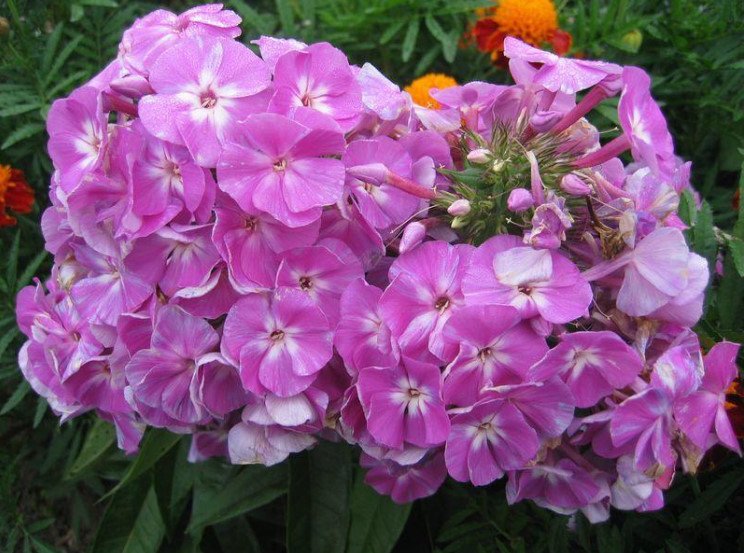It is believed that Phlox is extremely hardy and undemanding, which makes them even more popular. However, experienced collectors are often faced with problems that overshadow the joy of lush flowering plants so passionately loved.
Distressing diseases and persistent pests of Phlox settle sooner or later in any collection. The main reason for the appearance of such troubles is the replenishment of the collection with new varieties obtained from various sources. And often the healthy appearance of a new Phlox is deceptive, diseases can have a hidden (latent) character. Many years of my own experience in growing Phlox and observing how my colleagues-Phlox growers are fighting diseases and pests-have allowed me to be more calm about this problem and not to panic ahead of time.
Viral diversity
The most controversial and incurable disease Phlox, which causes a sense of horror and helplessness in anyone who has ever seriously faced him — variegated. The disease is insidious in that, being transmitted from generation to generation, it completely eliminates varietal characteristics, Phlox slowly degrades and poses a danger to healthy plants.
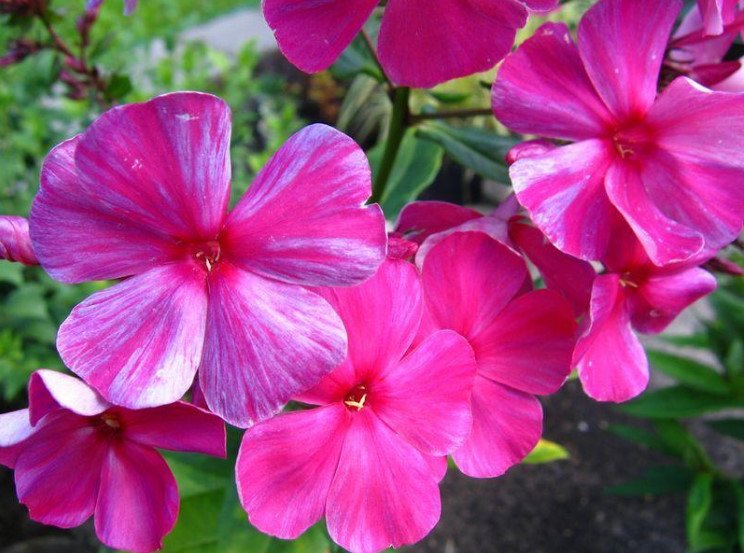
Unfortunately, at the moment fans of fans of Phlox no real opportunity to make an accurate diagnosis of this dangerous disease, as only in the laboratory and only professionals can determine the presence of the virus.
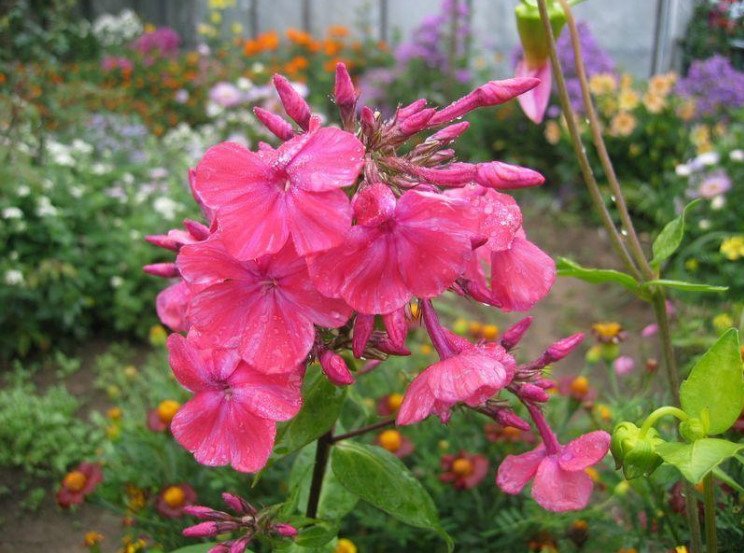
By the way, the same professionals have a reasonable opinion that the virus is to some extent present on any of the Phlox in a latent form, and at what point it will manifest itself — we can only guess.
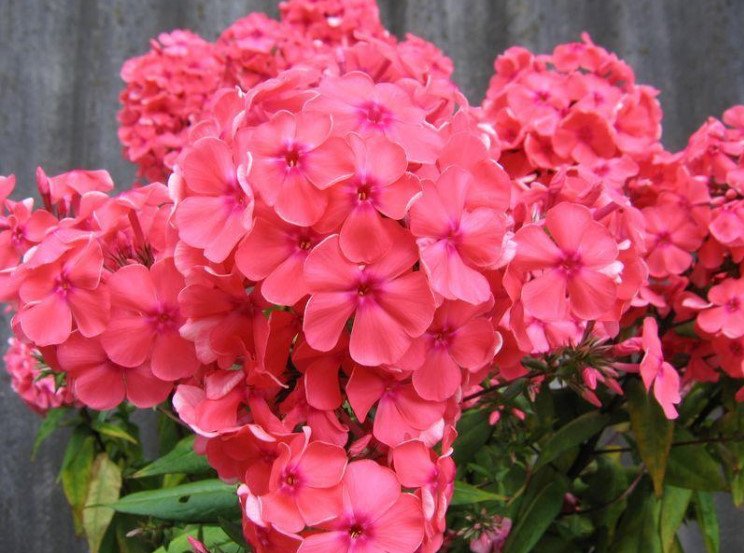
Fans also have to determine whether the infected Phlox or not, only on the external signs, which are not always pronounced, and sometimes look like a completely harmless defects in the color of the Corolla caused by adverse weather conditions, or the manifestation of varietal characteristics in genetic variegation.
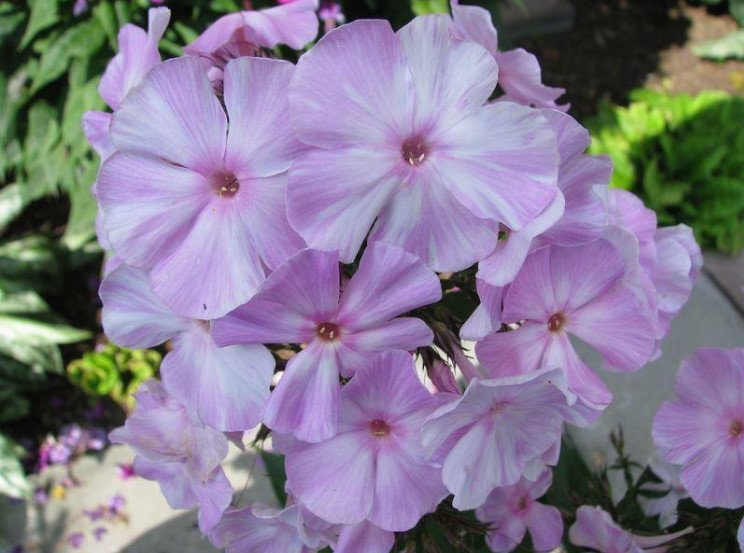
The variegated-spot virus changes the color of the flower, disrupting the formation of a coloring pigment-anthocyanin. On the petals appear radial stripes lighter tone, usually purple hue. Dangerous pattern unevenly-sector, non-repeating, non-symmetrical, pale-colored strokes expand at the ends.
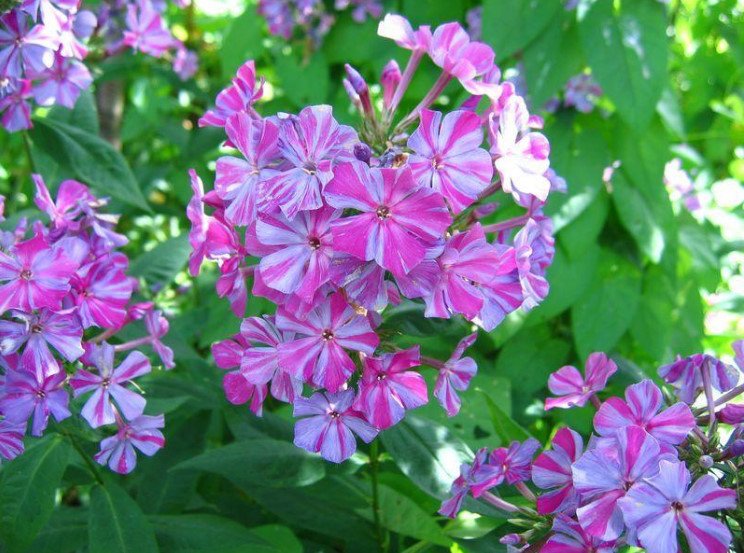
Find out on the external signs, sick Phlox variegated virus, it is possible, comparing it with a healthy Phlox the same grade. If the Amateur florist is not possible to compare a suspicious instance with the “control”, it can be done from the photos of Phlox.
Congenital variegation
When genetic variegated, as a rule, there is a clear uniformity and symmetry of the pattern, hatching intermittent. A characteristic venation on the petals of some varieties has a clear uniformity of the pattern, and the light strips do not expand, have the same width along the entire length.

Genetic variegation is often called “chimeric” varietal plants, which means the presence in the plant of two or more types of cells with different genotypes.
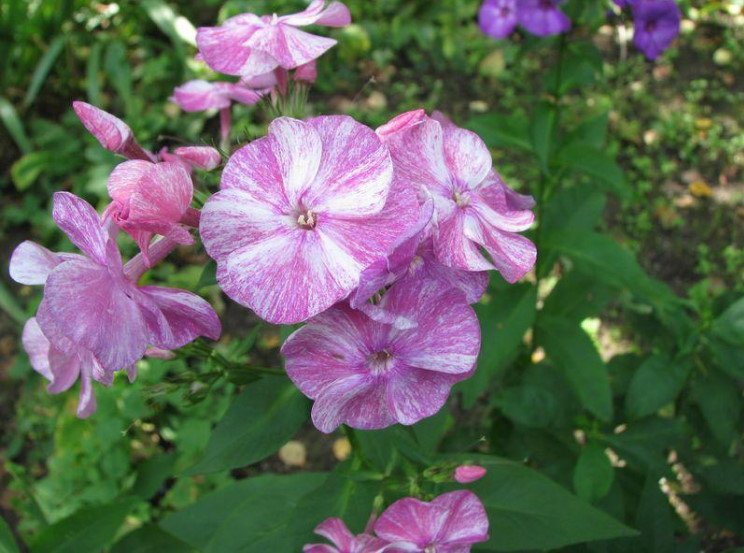
The problem of instability of chimeras, as a rule, is different growth rates of heterogeneous cells. Cells, growing faster, sooner or later supersede the rest, and Chimera can degenerate. There are several varieties of chimeras.

There are other chimeras, they are more stable.
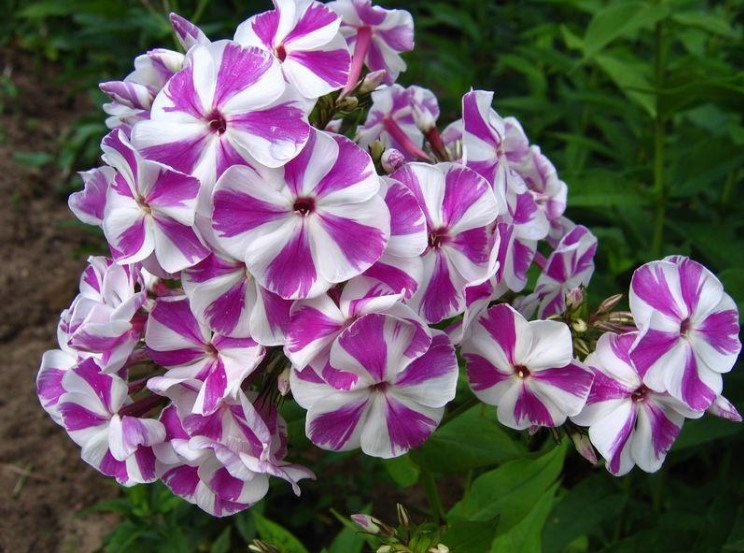
Although mutations and they are not uncommon, and sometimes beginners are afraid of such changes, taking them for manifestations of viral infections.
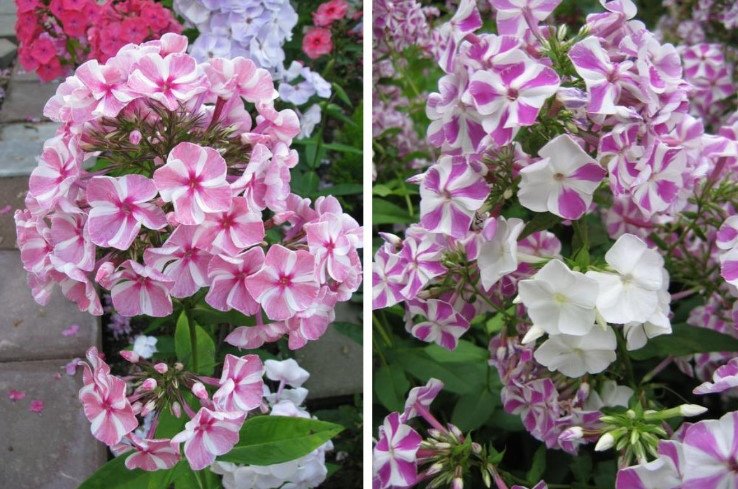
Smoky Phlox belonging to chimeras are also susceptible to viral variegation.
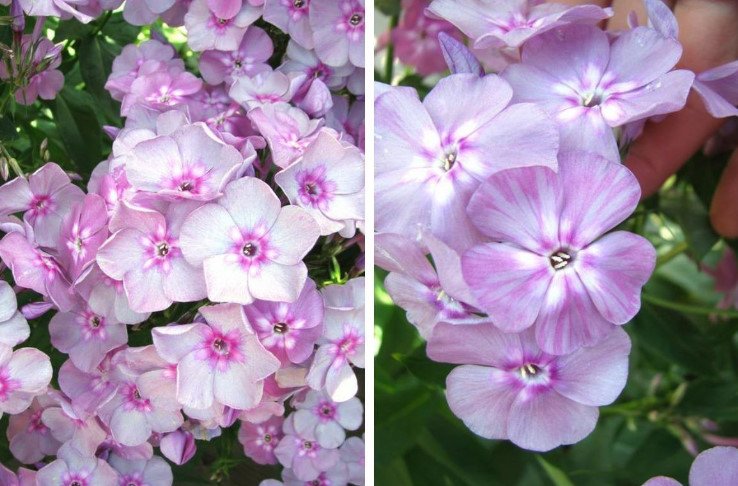
And is it possible smoky variegated viral origin? I have repeatedly seen how in the old and widespread variety in some seasons there was a clear haze, both on individual branches and on the whole Bush.
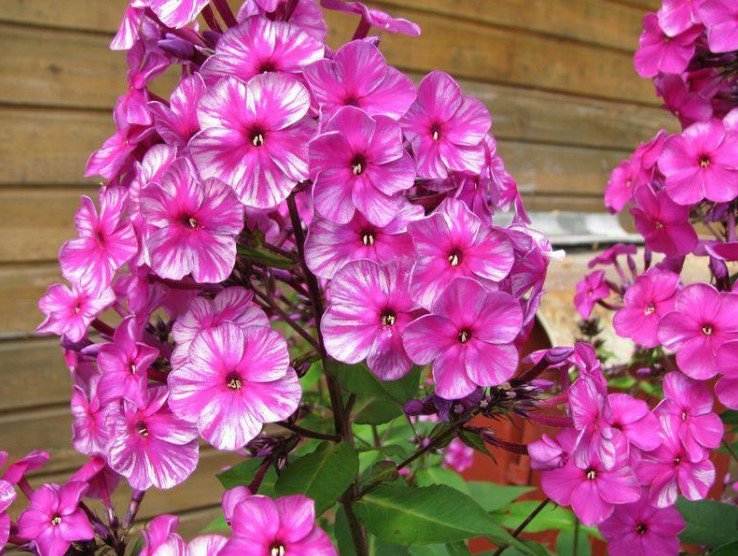
I assume that this is a typical viral variegation, since the color of all flowers is different and asymmetric.

It is considered that on pure white Phlox variegated spot is impossible to recognize, but, according to scientists, it should not be there in principle, because there is no anthocyanin in white petals. The exceptions are the white Phlox with eye. As a rule, the infected instances of the eye has no uniformly colored borders and a closer examination of the light intermittent strokes visible on the petals of the Corolla.
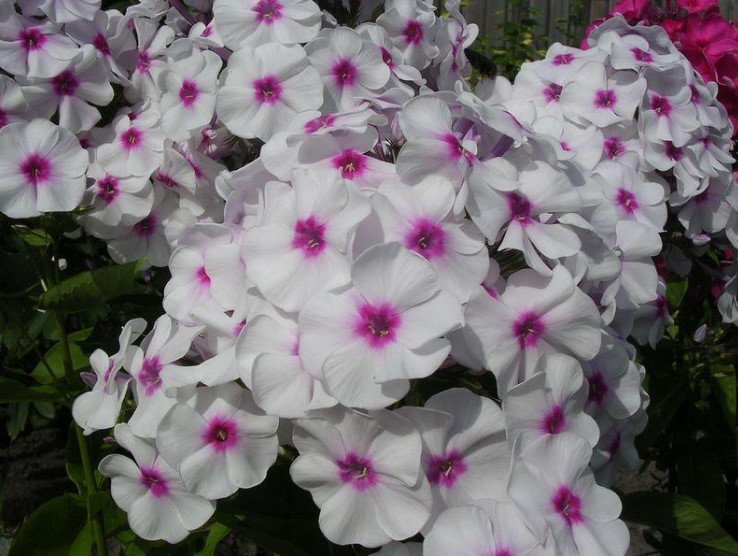
Not to confuse external signs of the virus with defects in the figure of the Corolla from the weather, to be forced to deploy a few buds in the inflorescence. Under unfavorable weather conditions, healthy Phlox loses color uniformity only on the open petals, in buds the flowers retain the purity of varietal color.
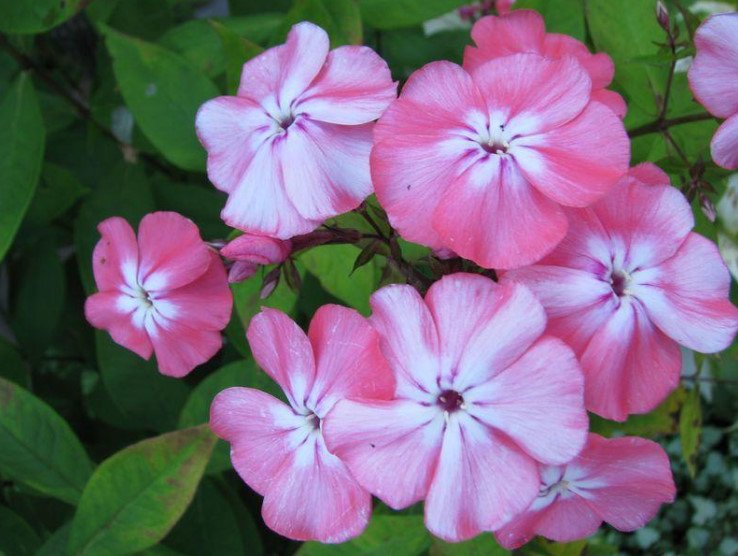
Infected flowers, as a rule, and in buds already have a characteristic color distortion.

Unfortunately, with a slight lesion variegated this method is not always justified — too difficult to see in the expanded Bud external signs of the virus.
To huge chagrin, Phlox are subject to not only variegated, the causative agent of which is the rhesus mosaic virus, but also other viral diseases.
